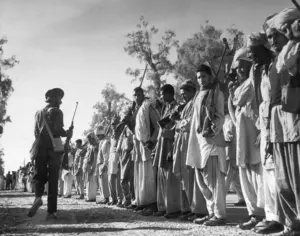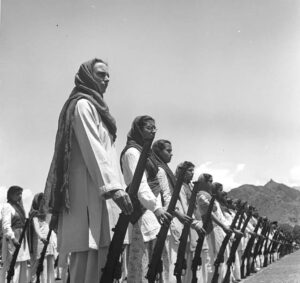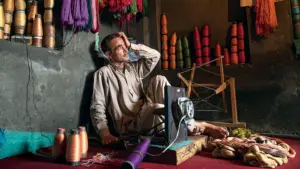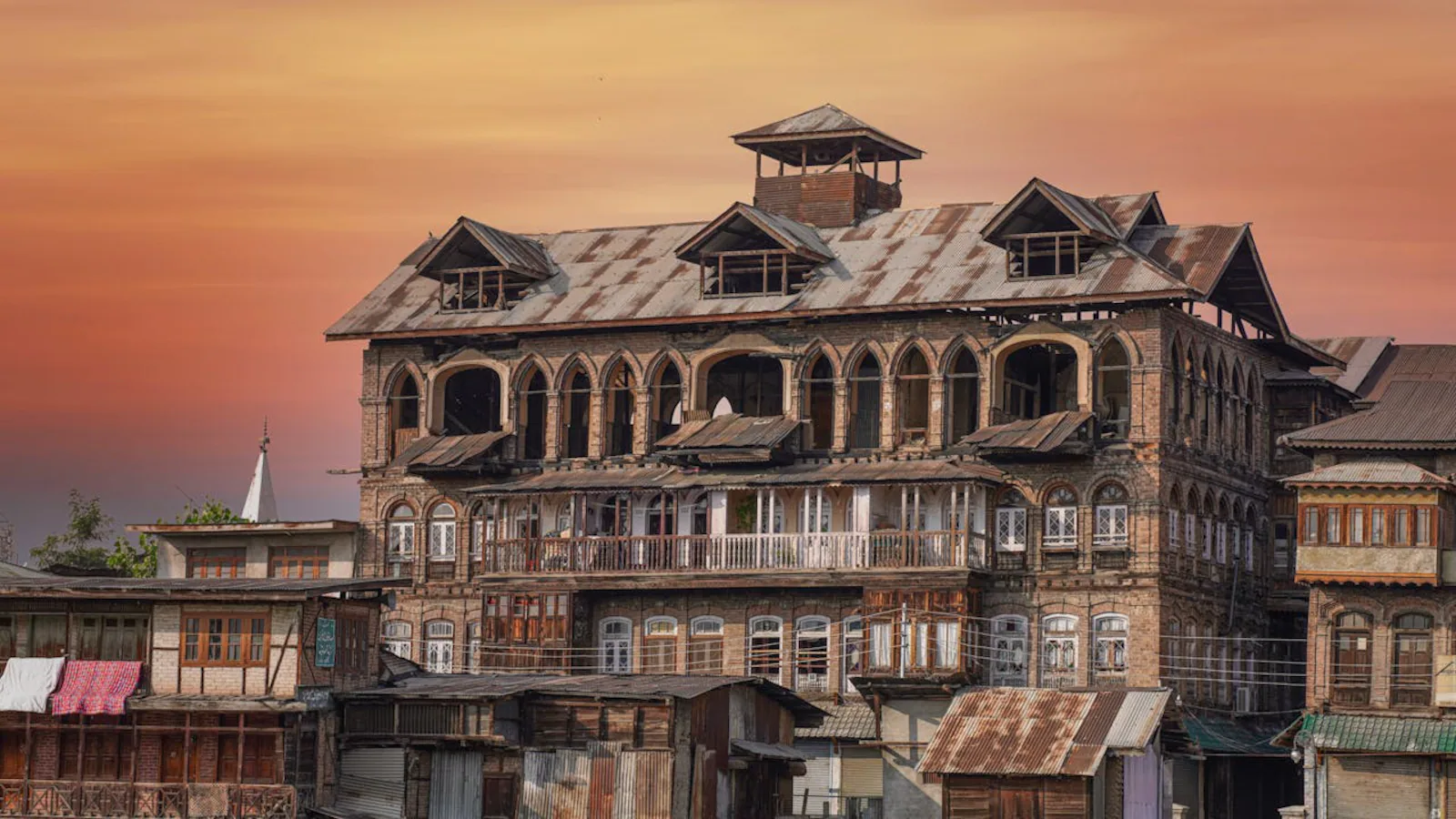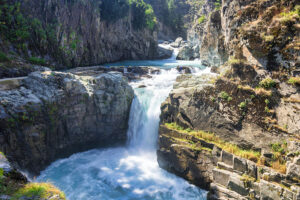By: Dr Zahid (Independent Researcher: PhD in Political Science)
There are places where buildings are meant to dazzle, and others where they are meant to endure. Kashmir has always belonged to the latter. Its indigenous architecture—subtle, textured, and structurally profound—was never a spectacle. It was a philosophy of living with uncertainty. To build in Kashmir was not merely to construct; it was to make peace with snow, to learn the seasonal dialect of wood and clay, and to submit to the reality of tremors. It was to carve out a space not of domination over nature, but of cohabitation with its moods. And yet, what is being lost in Kashmir today is not simply timber or proportion—it is a deep civilisational intelligence that once taught its people how to dwell with fragility, not in spite of it.
Traditional Kashmiri homes are not accidents of geography; they are outcomes of a highly localised epistemology. The construction techniques—such as taq, a system that alternates masonry with timber bands to distribute seismic stress, and dhajji-dewari, a frame-and-infill construction that allows walls to flex and fracture in a controlled way—are not curiosities. They are embodiments of a knowledge system where the material world was not treated as inert, but as alive with risk, weight, and rhythm. These forms survived not because they were strong, but because they were wise. Their wisdom lay in accepting the inevitability of failure—in building walls that were meant to crack so that lives wouldn’t have to end. They were structures that bent before they broke, that adjusted to the earth’s moods rather than resisting them with hubris.
This philosophy finds resonance in the writings of Randolph Langenbach, who has extensively documented the seismic resilience of Himalayan architecture. In his comparative studies, Langenbach argues that structures like dhajji-dewari are examples of what he calls “earthquake-resistant traditions,” far superior in survival than their concrete counterparts during tectonic events. These are technologies of humility, not domination. They resist the modernist impulse to erase uncertainty through rigid form. In this, they echo the phenomenological insight that to dwell is to inhabit vulnerability, not to suppress it.
This ethic of fragility extended beyond structure into space. The Kashmiri home was not sealed off from its environment; it was embedded in it. The placement of windows, the slope of roofs, the proportion of courtyards—all followed an intuitive climatology. In winter, homes trapped warmth using mud-plastered walls and low ceilings; in summer, pinjrakari screens and open verandahs let in filtered light and air. The iconic zoon dub—a delicate wooden projection over a stream or street—was not ornamental. It was a threshold space, suspended between the private and the public, a site for watching the world without being watched. Here, architecture carried ethical implications: the home was a site of modesty, community, and patience.
These designs were not just locally appropriate—they were locally intelligent. Niels Gutschow, who has written extensively on the architecture of the Himalayas, emphasises that the indigenous buildings of Kashmir were shaped not only by structural pragmatism but by cosmological awareness. Every beam had meaning, every threshold signified relation. The built form was a vocabulary through which a community made sense of its place in the world. In this sense, the loss of that form is the loss of a grammar of belonging.
To analyse this, one must draw on the theoretical framework of Pierre Nora’s idea of lieux de mémoire—sites of memory. In Kashmir, architectural forms are not simply products of culture, they are repositories of consciousness. The wooden homes of downtown Srinagar—multi-storied, weathered by snow, shaped by communal living—are not valuable because of their antiquity alone, but because they house a memory of social rhythm now vanishing. The taaq (window alcove), the dabb (threshold), the kaeni (attic), are all spatial metaphors that map Kashmiri emotional life—marked by both vulnerability and enclosure. These are not “traditional” homes. They are architectural vocabularies of survival.
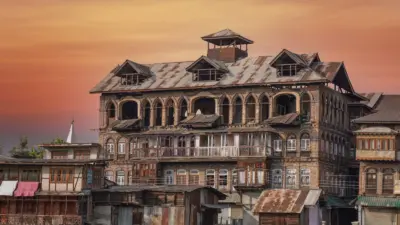
None of this is incidental. The decline of indigenous architecture in Kashmir is not the result of obsolescence, but of a violent misrecognition of what constitutes value. Cement structures with sharp edges and borrowed aesthetics have come to replace homes that once grew from the land itself. This is not a process of organic modernisation. It is the imposition of an aesthetic and functional regime that no longer responds to place, people, or memory. The new buildings—often multi-storey boxes with flat roofs and aluminium-glass facades—do not speak the language of snow, quake, or light. They are designed with indifference. Their foundations may be deep, but their meanings are shallow. And in this shift, what disappears is not just a construction technique but an entire way of thinking—about shelter, about impermanence, and about the obligations of dwelling.
This critique finds theoretical grounding in Kenneth Frampton’s idea of “critical regionalism.” In his foundational essay “Towards a Critical Regionalism”, Frampton warns against the dangers of a universalised architectural language that flattens difference and local knowledge in the name of modernity. He argues that true modern architecture must emerge from the soil of a region’s material and cultural conditions—not be imposed upon it as a sterile abstraction. Kashmir’s architectural loss is precisely what Frampton feared: the erasure of situated intelligence in favour of modular imitation.
What is most troubling is that this transformation has taken place largely without protest. The erosion of indigenous architecture has been accepted, even internalised, as a sign of progress. The word “modern” is now so elastic, so emptied of content, that it functions only as an alibi for imitation. But the modern is not simply that which comes later—it is that which emerges from the specific tensions of its own context. What passes for modern architecture in Kashmir today is neither responsive to geography nor respectful of tradition; it is a flattening of difference under the weight of a globalised style that treats concrete as universal, steel as inevitable, and glass as prestigious.
This erasure cannot be separated from larger epistemological shifts. What was once a form of dwelling rooted in care has become an exercise in extraction: from the land, from labour, and from meaning itself. The craftsmen who once measured timber not by inches but by grain, who read the weight of stone through touch, who knew when to bend and when to splice—these men are either gone or reduced to decorative artisanship. Their work survives not in homes, but in boutique hotels and curated nostalgia. And when the memory of work becomes decoration, the culture that produced it is already dead. The true loss, then, is not aesthetic but moral. A society that no longer knows how to repair its own walls, or even why those walls were shaped the way they were, is a society that has forgotten how to live with limits.
Hakim Sameer Hamdani, in his rigorous work on Kashmiri religious architecture, especially Syncretic Traditions, reminds us that Kashmiri built form historically absorbed not only local materials but overlapping spiritual cosmologies—Islamic, Buddhist, and Shaivite. A roof was not merely a shelter from snow; it was a surface where metaphysical and aesthetic orders converged. To dismantle this architecture, therefore, is not just to lose an engineering tradition. It is to disrupt a continuity of thought.
To dwell is to make peace with finitude. The Kashmiri home, in its traditional form, was an acknowledgement of limits: of what snow demands, of what earthquakes allow, of what a family needs and no more. Its rooms were rarely symmetrical, its lines rarely straight, but its logic was rigorous. It offered not excess but sufficiency. Not spectacle, but sensibility. And perhaps this is why it must disappear: because it quietly resists the logic of consumerism. In an economy that thrives on demolition and reconstruction, a house that lasts for eighty years and demands to be mended, not replaced, is a threat. It interrupts the cycle of capital.
But not all loss is inevitable. What has been dismantled can be reimagined—though not by returning to the past as a fossil. The task is not to restore every detail, but to retrieve the thought that animated those details. This requires more than policy; it requires imagination. Architects must once again learn to listen to materials, to seasons, to place. Builders must be retrained not in faster methods, but in slower truths. And the public must be reminded that to dwell is not only to occupy space, but to inhabit meaning. Only then can Kashmir’s architectural intelligence be reclaimed—not as a museum piece, but as a living ethic.
To preserve Kashmiri architecture is not to freeze it in time. It is to protect its emotional and ontological logic—a logic that prizes impermanence, craftsmanship, silence, and layered intimacy. Architectural conservation in this context must be an act of cultural continuity, not bureaucratic documentation.
One must also recognize the role of artisans—the forgotten keepers of architectural knowledge. The pinjraksars (lattice workers), naqashgars (painters), and wood-carvers are not mere workers but philosophical agents, carrying forward a way of thinking through matter. The loss of their craft is not just an economic tragedy; it is an epistemic rupture. Scholars like Lila Abu-Lughod have long argued that anthropology must recover the voice of the artisan, not just the design of the building. In Kashmir, that voice is disappearing, as generational transmission collapses.
Kashmiri architecture is not monumental. It does not seek to immortalize names or events. It is humble, temporary, fragile—yet it is precisely this fragility that gives it its dignity. In a culture constantly negotiating uncertainty, this architecture offers not protection from loss, but a way to live with it.
It is no coincidence that the architecture of Kashmir rarely celebrates conquest. It celebrates shelter. It is not the architecture of kings, but of saints, mothers, poets, and carpenters. Its future now depends not on tourism, not on museums, but on our willingness to remember—and to rebuild in the same spirit.
If we forget how Kashmir built its shrines, its homes, its temples, we will not merely lose heritage—we will lose a philosophy of living that once knew how to breathe even in snow, how to pray in silence, and how to endure without turning to spectacle.

